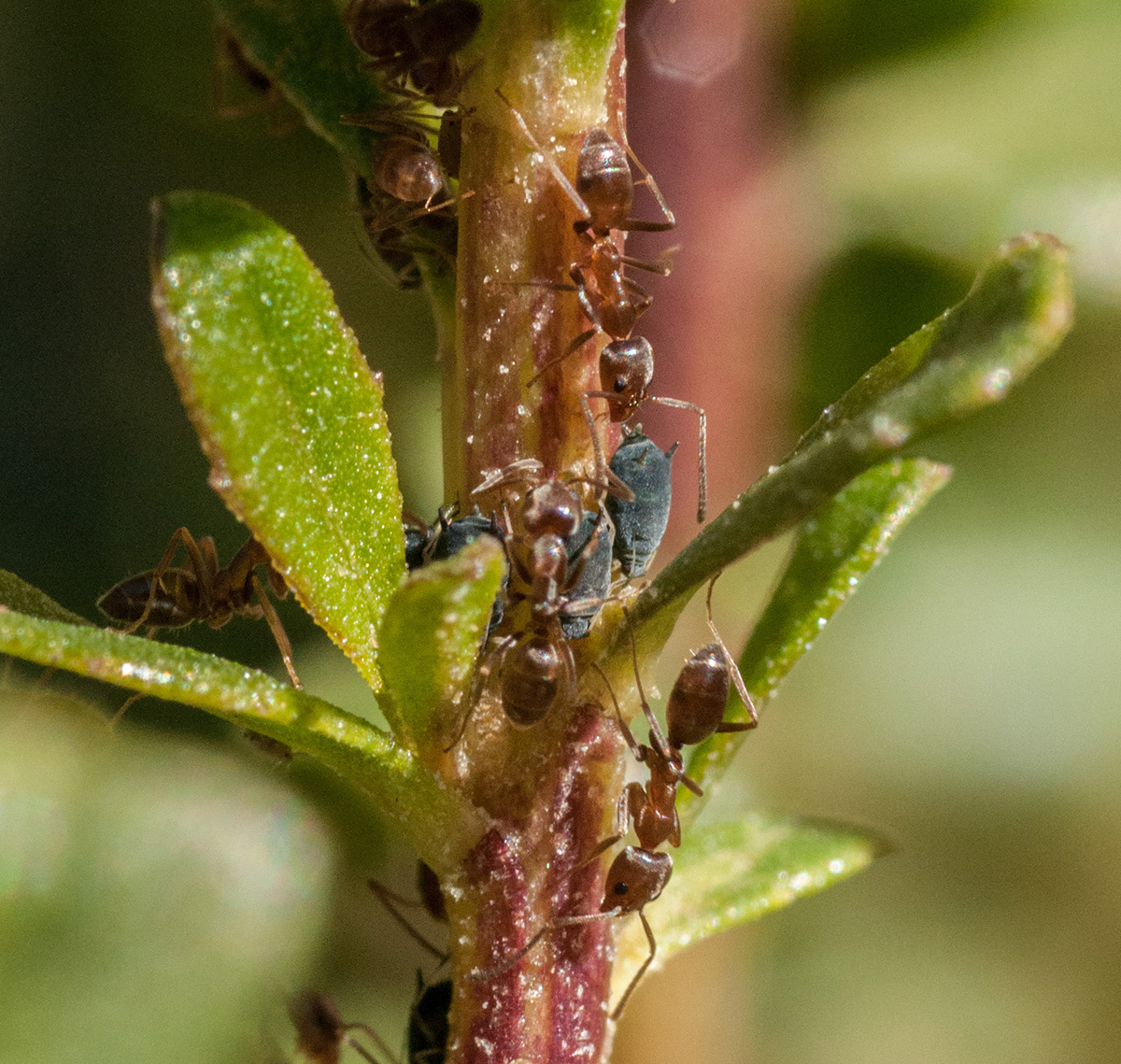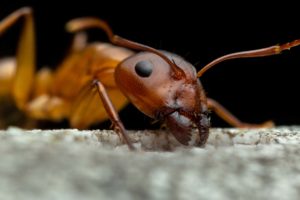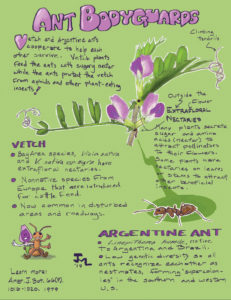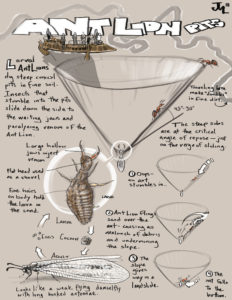How do you win a land war in Woodside? Know your strengths.
If, say, you are the Argentine ant Linepithema humile, famed as the most successful of all millimeter-scale invaders, you’ll want to stay close to your lines of supply: suburban streets and lawns. And if you are a beleaguered native winter ant, a Prenolepis imparis defending your colony and your queen with all the might that flows in a winter ant’s haemolymph? Then you will take to the hills and the wild places, you will fight in the cold, and you will use chemical weapons.
Such are the lessons from an 18-year survey of the invasion of the Argentine ant into the habitats of native ants within the Jasper Ridge Biological Preserve in the hills behind Stanford University. At nearly 1,200 acres, the preserve contains multitudes of environments, including creeks, a reservoir, oak and madrone forests, stands of Douglas fir, coast redwood groves, and serpentine grasslands. The preserve is the purview of Stanford, and the ants are the purview of biology professor Deborah Gordon.
Gordon began her survey of ant species within Jasper Ridge in 1993. Since then more than 300 sites in the preserve have been monitored, and 121 of those continuously. Every year, once in the spring and then again in the fall, Gordon and a succession of five grad students have marched into the field for weeks at a time to visit the sites, observing every species of ant they could find within 20 meters of a given point in every direction inside of five minutes. Gordon says she was motivated by a realization, when she first came to Stanford, “that Argentine ants were part of my destiny, since they’re everywhere around here.”
Argentine ants, as their name suggests, are originally from South America. They have since spread to six continents, invading Mediterranean climates around the world. L. humile is believed to have arrived in California around 1900.
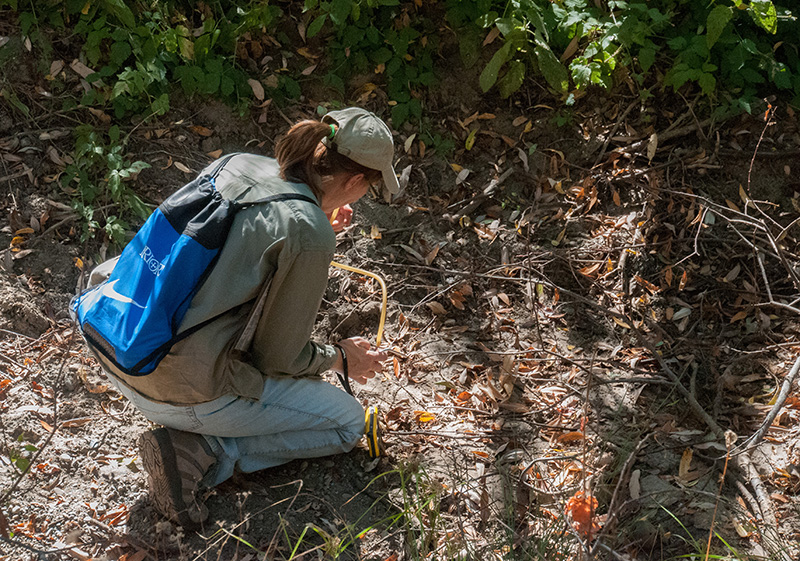
One of the keys to their success is that Argentine ants are much less aggressive toward other Argentine ants than they are toward other species. They share information, resources, and trails; they are so cooperative with each other they appear to function as a single colony, with many queens and many nests. In human neighborhoods, Gordon says, Argentine ants enter every home at the same time and leave at the same time, making them almost immune to attempts at pest control. “Everything we do to get them out of our buildings is really just to create the illusion of control,” she says, “because they leave when conditions improve outside.”
When Gordon began her survey, she believed it would document the Argentine ant’s pitiless eradication of all native competitors at Jasper Ridge. But Gordon says that didn’t happen. Instead, as she and her grad students have learned, in the wilderness, the invasion has turned into a stalemate, because like Napoleon before them, the Argentine ants have outrun their supply lines and are ill-equipped for winter.
The Argentine ant may be a fearsome invasive species, but its success depends on an even more destructive invasive species: us. “Generally, globally, they decimate” native ants, Gordon says, but at the same time “it looks as though they really need resources provided by people.”
Specifically, they need our lawns, our trash, and — in cold and rainy weather — our nice, warm homes. Where Jasper Ridge abuts suburban development, Argentine ants have been able to move in and evict native ants. But they can expand inward only so far.
The Argentine ants invade in seasonal pulses, expanding their range in the spring and summer. Since 2001, however, their expansions into new territory have been few and offset by winter contractions.
Generally speaking, in those winter contractions they are giving ground back to the winter ant. P. imparis is one of 32 California native species found at the preserve, and it is one of the few directly competitive species that has been shown to resist Argentine ants.
Research out of Gordon’s lab has shown that both species are active all year round at Jasper Ridge, though at different levels of activity. Argentine ants start to lose out to winter ants when they move into more vegetation-shaded areas and onto higher elevations, and California’s native ants, while they may not be everyone’s idea of a photogenic poster species for conservation, can thrive and even repel Argentine invaders in big open spaces.
Even more interesting is that Gordon’s lab has discovered that the winter ant is a chemical weapons specialist. When greatly outnumbered by Argentine ants or when defending its nests, it secretes a white liquid from its abdomen that causes an “immediate loss of coordination in the victim,” her study finds. The result is an impressive 79 percent mortality rate among attacking Argentine ants. It’s a weapon that has allowed the winter ant to not only defend its territory from Argentine ants but to occasionally regain ground from them.
And the ant survey that’s helped to discover all of this? It’s still going on, only now the count is being conducted not by grad students but by citizens volunteering their time as scientists. Each spring and fall, groups of hikers fan out to GPS points within the preserve and collect and identify specimens of any ants they can find. Want to be a part of it? Contact the Jasper Ridge Biological Preserve at http://jrbp.stanford.edu.

